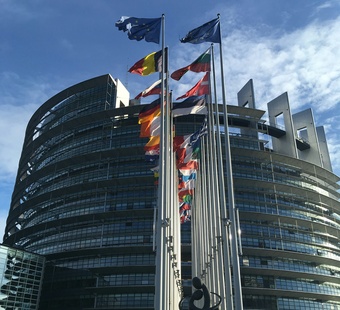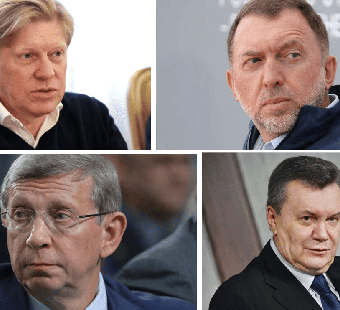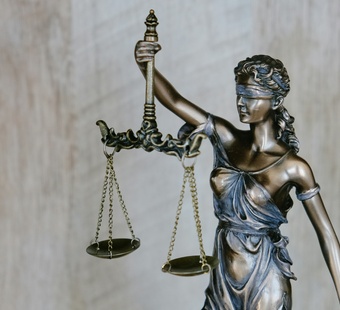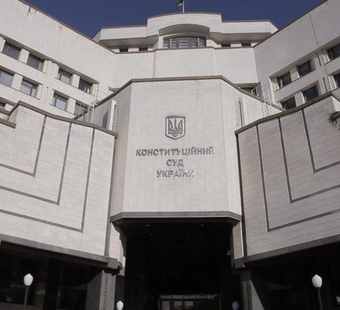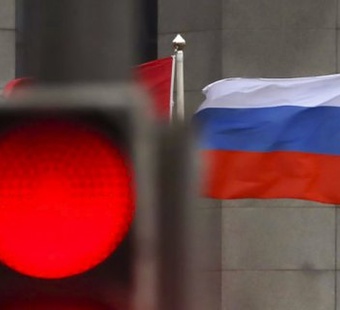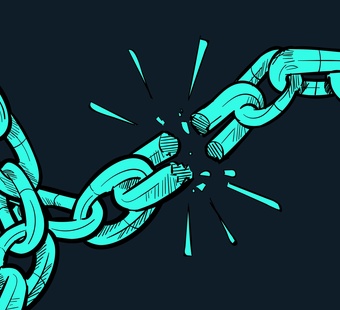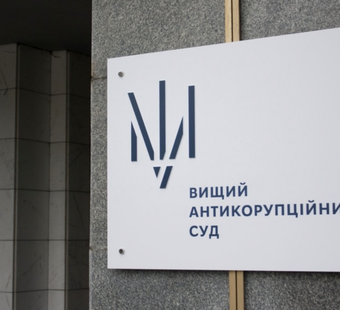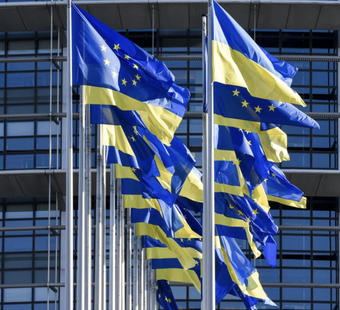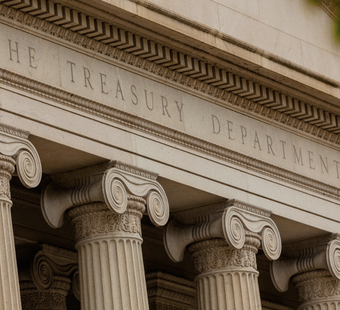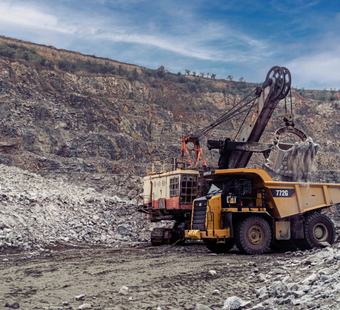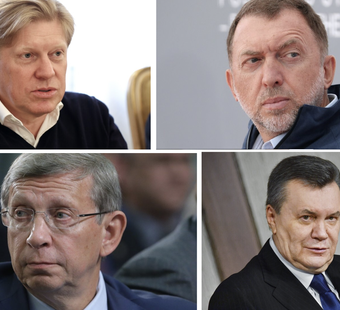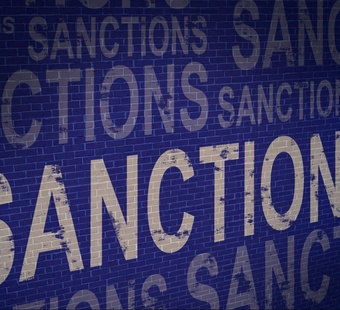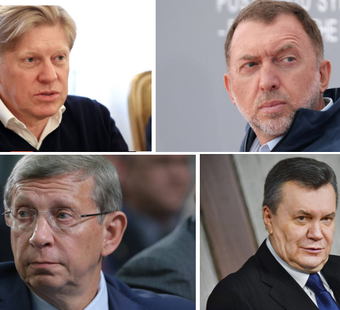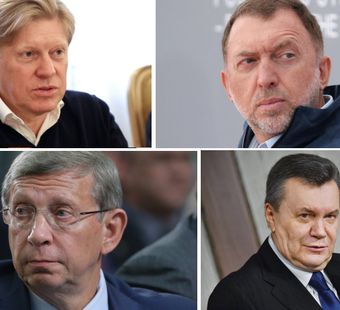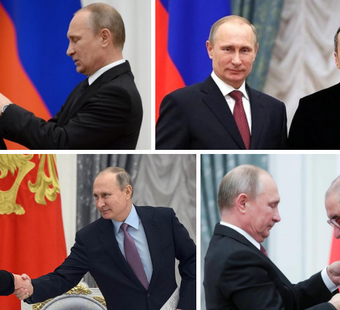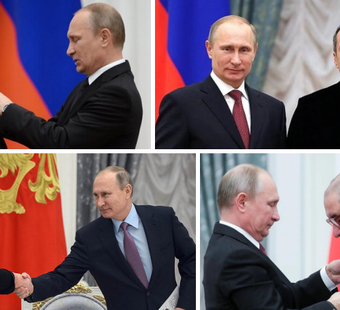Major concerns on the Ukrainian mechanism of asset forfeiture as a sanction
*This analytics is published in English only

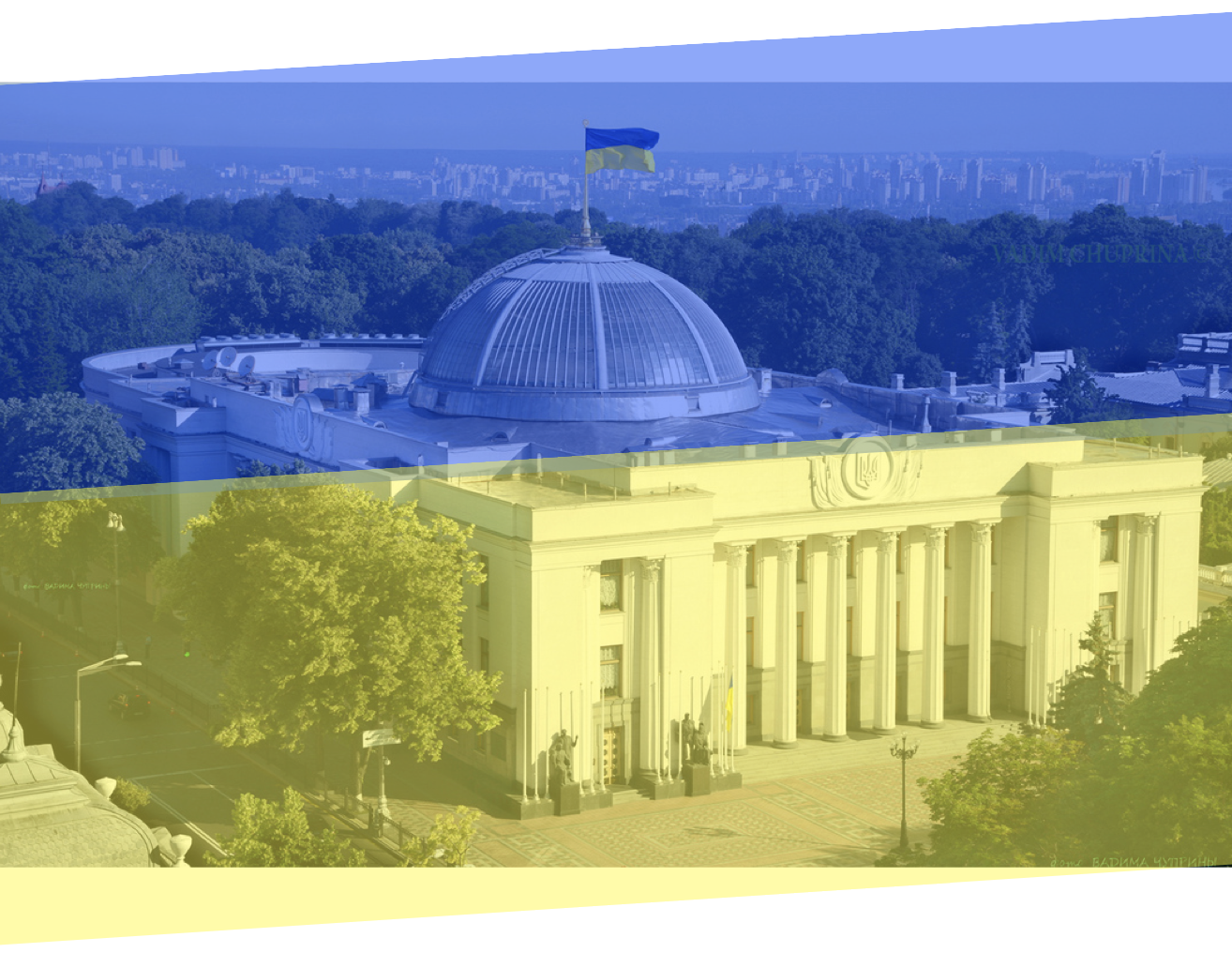
Publisher: © CSO “Institute of Legislative Ideas” All rights reserved.
Authors: Tetiana Khutor, Andrii Klymosyuk, Taras Riabchenko, Andrii Mikheiev
This research was issued by the think tank "Institute of Legislative Ideas" within the framework of the "Arrest and Confiscation of Russian Assets" project with the support of the EU Anti-Corruption Initiative (EUACI), the Initiative for the Development of Analytical Centers in Ukraine, which is carried out by the International Renaissance Foundation in partnership with the Open Society Initiative for of Europe (OSIFE) with the financial support of the Embassy of Sweden in Ukraine. The opinions and positions expressed in this research are the position of the authors and do not necessarily reflect the position of EUACI, the Embassy of Sweden in Ukraine, the International Renaissance Foundation and the Open Society Initiative for Europe (OSIFE).
Executive summary

Summary

Ukraine became the first state to enshrine the mechanism of sanctions in the form of asset forfeiture in legislation. Ministry of Justice has been authorized as a body for filing a lawsuit for the application of this sanction, and the case shall be admissible to hearing by the High Anti-Corruption Court pursuant to the procedure defined by the Law. At the same time, the Law contains a number of shortcomings and risks that can become grounds for appealing court decisions and undermine all efforts made to forfeit the assets of the aggressor and its accomplices. There are critical issues of material nature and procedural nature, that could be eliminated by means of amending the legislation.
Material issues consist in essential shortcomings of the Ukrainian legal framework of asset forfeiture and debatable aspects of legislative regulation. Those include the following:
- Absence of a specifically defined purpose for asset forfeiture that would clearly point to the legitimate goal of interference with the property right as a necessary component of proportionate restriction of rights.
- The law does not contain order further use of forfeited funds, which should correlate with the goals of forfeiture.
- The possibility of applying forfeiture as a sanction to Ukrainian citizens, which does not fully correspond to the legal nature of sanction restrictions, as a means of influencing those who cannot be “reached” by ordinary tools (in particular, criminal proceedings).
- The Law does not apply to entities whose assets were blocked before the Law entered into force (May 24, 2022). The way to resolve this was the reimposition of blocking of assets of such persons as a prerequisite for their further forfeiture (with corresponding amendments to the Law).
- The law defines a non-exhaustive list of grounds for asset forfeiture, which gives law enforcement agencies excessive discretionary powers. In addition, some criteria for the grounds of asset forfeiture are legally uncertain, which may complicate the practice.
- An opportunity is envisioned to forfeit assets for actions which are inherently legal, such as paying taxes to the budget of Russia. This approach violates the principle of foreseeability and, obviously, should not cover all businesses and investors who worked in Russia, but rather oligarchs whose profits were obtained due to closeness and loyalty to the Putin's regime or who supported Russian aggression against Ukraine with their own funds.
- In specifying the grounds for forfeiture, the Law describes actions with different consequences. In this regard, the Law lacks criteria for differentiating the amounts of assets that are subject to forfeiture (it is not specified whether all or only part of the assets should be forfeited);
- The law makes asset forfeiture a priority measure, without taking into account the rights and interests of third parties and bona fide third parties in relation to these assets (creditors, victims, etc.).
Procedural issues are connected with shortcomings of the very forfeiture procedure in court, which may become a ground for further appeal of such court decisions, citing violation of Art. 6 of the ECHR. Namely:
- The specified 2-day time limit for filing a response to a claim since the moment of its receipt is objectively insufficient for reviewing the claim, translating it, collecting refuting evidence, drafting and sending the response. The plaintiff (Ministry of Justice) can take several months to prepare the claim, while the defendant must prepare their objections in just 2 days, which may indicate a failure to comply with the requirement of equality of the parties.
- The general period of proceedings on asset forfeiture in court (10 days) may not be sufficient to ensure the direct participation of the defendant. Given the long distances and logistical problems caused by the war, it is necessary to ensure the defendant's right to participate in the hearing remotely.
- The 10-day term for consideration of the case since the moment of filing the claim is likely insufficient to ensure a high-quality trial, given the volume of claims (several hundred pages) and responses.
- Inadequate publicity, in particular closed hearings, significantly reduce the lawfulness and predictability of such forfeiture. Therefore, openness of all procedural stages of asset forfeiture gains significance.
- The Code of Administrative Procedure does not clearly define the merits of the burden of proof, which is applied regardless of the specifics of the procedure.
The existing Ukrainian practice of forfeiture of private assets (weapons manufacturing oligarch Yevtushenkov) shows the urgent need to improve the existing model of forfeiture, taking into account the critical points of regulation described above.
At the same time, by forming proper practice of implementing the forfeiture sanction and the use of the proportionate approach in such interference by the state with the title of ownership (read more here), the shortcomings of legislative regulation may be mitigated.
Chapter І

The mechanism of forfeiture of assets of Russian and Belorussian individuals

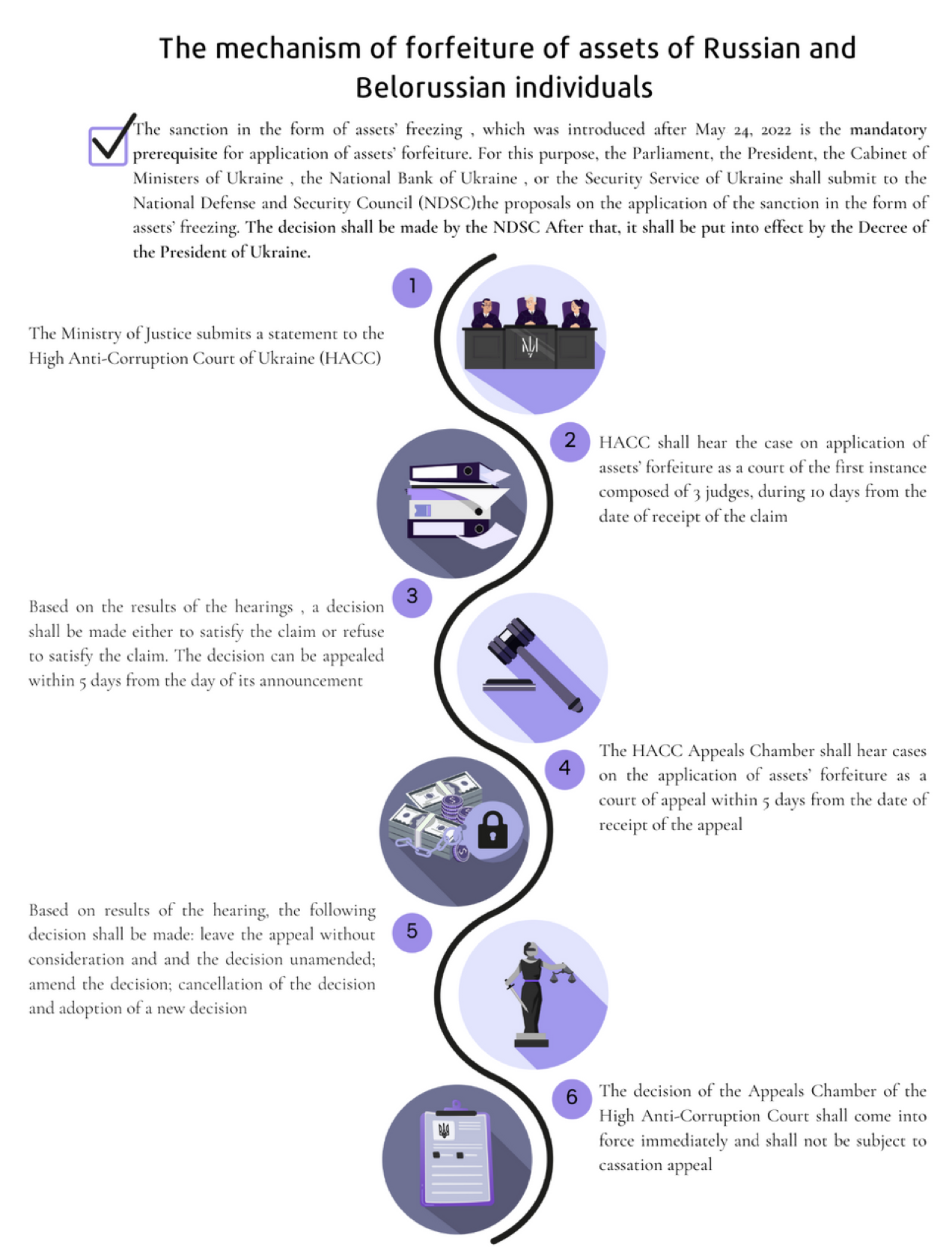
By adopting the corresponding Law*, the list of sanctions was supplemented with a new sanction having exceptional nature — collection to the state income of assets belonging to a natural or legal person, as well as assets in respect of which such a person can directly or indirectly (through other natural or legal persons) commit actions identical to the exercise of the right to dispose of them. In its essence, such a measure is asset forfeiture, or asset confiscation, which is why we use this concept in this document.
The objective of this document is to highlight the main problems of the adopted Law which may negatively affect the practice of its implementation. It should be noted that many shortcomings of the introduced forfeiture instrument exist due to the unpreparedness of the existing sanction and procedural legal framework for the consideration of such cases and could be eliminated by means of amending the legislation.
* The Law of Ukraine “On Amendments to Certain Legislative Acts of Ukraine on Increasing the Effectiveness of
Sanctions in Relation to Assets of Individuals.
Chapter ІІ

What is the purpose of asset forfeiture?

Asset forfeiture is a significant means of state influence. As a result, the person is deprived of all or part of the property without the right to recover it or receive any compensation for the losses. Therefore, the seriousness of the consequences and the specifics of the application procedure should correlate with the specific goals of the application of asset forfeiture.
Adequate interference with property rights is one of the main conditions for the legitimacy of such interference. In addition, the legitimate goal of the interference is one of the criteria that must be followed in view of the ECtHR judicial practice regarding the observance of the rights provided for in Art. 1 of Protocol No. 1 to the Convention on the Protection of Human Rights and Fundamental Freedoms (ECHR).
However, the Ukrainian law does not establish a special purpose for such an “exceptional” sanction, but rather refers to the general purpose of applying sanctions. Art. 6, part 3 of the Law of Ukraine “On Sanctions” (hereinafter — the Law) indicates that asset forfeiture is an exceptional measure due to the urgency of the situation and the need to achieve the goals defined by Article 1, part 1 of this Law, in the conditions of the legal regime of martial law.
These goals, as defined by the Law, include:
- protection of national interests, national security, sovereignty and territorial integrity of Ukraine;
- countering terrorist activities;
- preventing violations, restoring violated rights, freedoms and legitimate interests of citizens of Ukraine, society and the state.
In its turn, Art. 1 of Protocol No. 1 to the Convention states that one can only be deprived of property in the public interest*. This category has a rather broad interpretation. It is the national authorities that must identify the needs of society and establish what constitutes the public interest, as well as the goals that need to be achieved in the national policy (particularly sanctions policy) through such deprivation of property (asset forfeiture).
According to the ECtHR case law, the legitimate aim of the measure will establish the state's interference with property rights as lawful. In order to achieve this, the objectives which can be achieved through this measure and their correlation with the public interest must be explained in proceedings. The neglect of this element may establish grounds for further appeal of the decision, particularly in the ECtHR.
PROBLEM
As we can see, legislators justify the need for the use of forfeiture by the acuteness of the situation and the need to achieve the specified goals in the conditions of martial law. This, however, does not clearly answer the question of why it should be forfeiture in particular, rather than any other sanction needs to be applied in a specific case. Specific targets for asset forfeiture as an exceptional sanction could address this problem.
The goals of the law are indicated by 1) what the law actually sets forth 2) actions that must be stopped as a result of the sanctions 3) targets on which the forfeited funds can be spent.
- The general goals (both of strengthening the blocking and of asset forfeiture) of the new Law of Ukraine are only contained in the explanatory note to the draft law and cover:
1) stopping the actions that enable war crimes, crimes against humanity and large-scale destruction of civilian infrastructure committed by the Russian Federation on the territory of Ukraine.
2) strengthening the financial and economic capacity, the defense capability of the Ukrainian state and compensation for the damage to the victims of the crimes committed by the Russian Federation.
The specified goals are interrelated, but it is stopping the actions that enables the commission of crimes by Russia and destruction of Ukraine that is of key importance. Asset forfeiture should primarily be aimed at achieving this goal.
- Moreover, the further fate of the forfeited assets remains unclear in the law. It is not provided whether and how they will be sold/transferred to management or whether they will be transferred to state revenue in another way. The clarity and transparency of these mechanisms is of crucial importance for the achievement of the aforementioned goals.
In this context, clear vectors for spending of forfeited assets could be an important compensator for the shortcomings of the law. Currently, the law does not establish this. One way to resolve this situation could be amending the Budget Code, which prescribes the list of revenues and spending of budgets at every level in legislation. If the funds are unequivocally directed to a special fund within the state budget, it would guarantee their use for the envisioned purpose.
The second goal complements the first one and reflects those measures that, on the one hand, will prevent repeated aggression in the future (strengthening of defense capabilities), and on the other hand, will contribute to the compensation to citizens (for damage and losses) and the state (by strengthening its economic and financial situation).
However, due to the uncertainty of the effective version of the law, currently, the plaintiff will have to indicate such goals in the lawsuit, and the court will have to substantiate the possibility of achieving this specific goal in case of meeting the claims.
* Bohdan Karnaukh. Protection of Property by the European Court of Human Rights and Horizontal Effect. Law of
Ukraine. 2021. No. 5. Р. 158.
Chapter ІІІ

Who will be subject to asset forfeiture?

The sanction shall be applied to natural persons and/or legal entities falling under the criteria established by the law.
Since the application of this measure is envisaged within the scope of imposing sanctions, all general norms of the Law apply to asset forfeiture. Under Art. 1, part 2 of the Law, sanctions may be imposed by Ukraine against a foreign state, a foreign legal entity, a legal entity controlled by a foreign legal entity or a non-resident individual, foreigners, stateless persons, and entities engaged in terrorist activities.
Under Art. 5, part 3 of the Law, personal sanctions are used in relation to certain foreign legal entities, legal entities under the control of a foreign legal entity or a non-resident individual, foreigners, stateless persons, and entities engaged in terrorist activities.
Therefore, the target of personal sanctions in the form of asset forfeiture cannot be wider than the specified provisions of the Law.
Asset forfeiture can be applied to:
1) foreigners and stateless persons;
2) foreign legal entities;
3) Ukrainian natural persons who carry out terrorist activities;
4) Ukrainian legal entities that carry out terrorist activities or are under the control of a foreign legal entity or a non-resident natural person, or in which Russia has a share.
PROBLEM
Contrary to these provisions of the Law, practice of its application indicates the possibility of imposition of sanctions on citizens of Ukraine*. De jure, this violates generally accepted approaches to sanctions policy, but, de facto, it meets the real need — many people have foreign citizenship at the same time as Ukrainian, and/or are directly located on the territory of Russia, supporting the military aggression with funds or information. With regard to this, the range of subjects should not be limited exclusively to foreign subjects, as it would unfairly limit the application of the law. Instead, the main criterion for the application of forfeiture against a specific person should be the commission of acts that correspond to the legally established grounds for imposing sanctions.
*This includes public statements about forfeiting the assets of Ukrainian traitor oligarch Kurchenko, ousted president Yanukovych, and others. Source
Chapter ІV

What are the conditions for asset forfeiture?

The conditions for asset forfeiture are as follows:
- the possibility of application only during the period of the legal regime of martial law;
- prior imposition of sanctions on assets in the form of their blocking.
Asset forfeiture is possible only if these two conditions are met. It is worth noting that the legal regime of martial law narrows the timeframe for asset forfeiture and stimulates the government to impose sanctions as quickly as possible. In addition, the need for prior freezing of assets requires prompt and effective work of the Security Service of Ukraine (as a priority body that forms a list of persons for the application of sanctions in the form of asset freezing) and the NDSC (as a subject of decision-making on asset freezing).
PROBLEM
We will also emphasize that the Law cannot be applied retroactively. Art. 6 of the Law stipulates that forfeiture of assets can only be applied to individuals who have been sanctioned in the form of asset freezing by the decision of the National Defense and Security Council of Ukraine adopted after the Law of Ukraine “On Amendments to Certain Legislative Acts of Ukraine on Increasing the Effectiveness of Sanctions in Relation to Assets of Individuals” came into force. Thus, asset forfeiture can only applyto individuals whose assets were frozen after the Law came into effect (24.05.2022).
Although this provision does not allow the forfeiture of the assets of 2,936 individuals and 586 legal entities already blocked before May 24, 2022, this provision is correct with regard to Art. 58 of the Constitution of Ukraine.
However, it should be understood that in the context of the war in Ukraine and the legitimate aim of this measure, as well as the civil legal nature of the measure, forfeiture remains necessary in relation to the persons whose assets were blocked before the war, but this failed to effect a change in their behavior. A possible resolution here, as illustrated by practice, was the reimposition of the sanction. This tool is not provided by the law at this time, but if there are sufficient grounds, and they remain relevant after February 24, 2022, and in order to achieve the lawful goal of the law, its application appears quite possible. However, this requires modifying the law.
In addition, it should be noted that the current legislation clearly separates the using of asset forfeiture due to sanctions, on the one hand, and criminal prosecution on the other. By its nature and by analogy with similar mechanisms, this forfeiture is civil in nature, not criminal. It is not aimed at establishing the individual’s guilt, but rather at achievement of the specified goals of the law. Therefore, in this context, prohibition of retroactive application of the law should not be applied, and sanctions in the form of asset blocking may formally be reimposed.
Chapter V

What are the grounds for asset forfeiture?

Assets will be forfeited for actions that created a significant threat to the national security, sovereignty, or territorial integrity of Ukraine (including through armed aggression or terrorist activity) or significantly contributed (including through financing) to the commission of such actions by other persons.
The grounds* (effectively, the criteria for a significant threat and significant contribution) are:
1) causing significant damage to the national security, sovereignty or territorial integrity of Ukraine, particularly, but not exclusively, by means of:
This reasoning contains 10 clarifying criteria, which generally indicate persons who made decisions about, or participated in, armed aggression against Ukraine, as well as collaborators who supported occupation administrations and bodies or held referendums or elections in the occupied territories.
PROBLEM
1. The law does not limit the list of grounds, which, on the one hand, provides flexibility for law enforcement, but on the other hand, does not contribute to legal certainty and may allow excessive discretion on the application of asset forfeiture. Given the severity of the restriction on rights, the list of criteria should be exhaustive. This approach will comply with the principle of lawfulness*. In general, the principle of lawfulness provides that the implemented provisions of the legislation should be sufficiently accessible, precise, and predictable in their application. Thus, it means the regulatory framework of sanctions in the form of asset forfeiture. The criteria for determining the entity to which asset forfeiture can be applied should be clearly reflected in the legislation. A similar point applies to the second reason, which also contains a non-exhaustive list of criteria.
2. In the general norm (Part 1 of Art. 5-1 of the Law), it is indicated that the grounds for the application of the sanction are “the creation of a significant threat to national security, …” At the same time, when describing the specific grounds, the phrasing is “inflicting significant damage to national security, …” There is a fundamental difference between the specified grounds. If there is significant damage caused, it requires the establishment of a direct cause-and-effect relationship between a person's action and specific consequences. There is a risk that when proving the existence of grounds for asset forfeiture, it will be difficult or impossible to prove that a person has caused specific damage, given the consequences caused by military actions of this scale**. This inconsistency should be eliminated and the ground for asset forfeiture should indeed be defined as creation of a significant threat to national security with respective criteria.
3. Some criteria lack adequate legal certainty. For example, “participating in state financing and logistical support of measures related to the decision to start armed aggression against Ukraine” can have different interpretations. First, formally, this criterion includes persons who have indirect ties to the aggression, which blurs the legitimate goals of this measure. This criterion also overlaps with the second reason for the application of asset forfeiture, since such actions are by their nature “support.
2) substantial support of the actions or decision-making specified in the previous paragraph.
This is about persons who contributed directly to the invasion and persons who are
indirectly involved in the war. They are:
- those who expressed the intention and readiness to use their army to promote the armed aggression, provided Russia with the use of territory, civil or military infrastructure for the accommodation of its army and supplies, let the Russian army through their border into the territory of Ukraine (this may be about the political and military leadership of Belarus);
- big business. These are companies that have paid taxes to the state budget of Russia in the amount of more than ~ 1 million EUR over the past year. For natural persons, the amount must exceed ~ 75,000 EUR;
- benefactors and donors who made donations to state authorities or the military leadership of Russia for more than ~ 8 750 EUR.
- buyers of Russian government bonds. It shall be considered as indirect support for the war against Ukraine from the amount of ~ 75,000 EUR per year;
- propagandists and those who disseminate Russian narratives. These are persons who publicly: approve or deny the fact of the armed aggression against Ukraine, occupation and war crimes; glorify the Russian army and its collaborators; support Russian policy and anti-Ukrainian narratives, and incite hatred towards everything Ukrainian.
PROBLEM
- While the first group of grounds for asset forfeiture relates to significant damage by engaging in actions which directly violate international law (unjustified use of force against territorial integrity and political independence of another state, committing the crime of aggression) and is also illegal under Ukrainian law, the second group points to support of such actions. Therefore, it should be clearly specified that such actions should also be illegal by their nature and the mens rea of the individual supporting illegal actions. The indisputable argument that such actions were deliberate is their commission after the full-scale invasion on February 24. On the other hand, when assessing the behavior of persons before the invasion, the commission of the specified acts in violation of sanction restrictions should be considered “support.” For example, this applies to the item "supply/provision, storage of weapons, ammunition, explosives, military or special equipment, other means and tools for carrying out armed aggression against Ukraine, ensuring the repair of such tools and equipment."
- Some of the criteria specified in the Law violate the principle of foreseeability of the law. Namely, it is the issue with item B of reason 2 concerning payment of taxes or investing in government bonds. The proposed approach is controversial, because this person could not know in advance (before February 24, 2022) that the taxes they pay would possibly be used to finance aggression in the future. These actions also do not appear to be in violation of any law. Companies remaining on the market are rather a moral issue than a ground for asset forfeiture. This “business" criterion was obviously intended to cover not all companies and investors who worked in Russia, but Russian oligarchs whose profits were obtained due to closeness and loyalty to the regime, or who supported Russian aggression against Ukraine with their own funds.
- Certain criteria specified in the Law do not correspond to the principle of legal certainty. Such wording of grounds as "glorification of persons who carried out armed aggression against Ukraine, representatives of armed formations…"; “supporting the policy of the aggressor state regarding the non-recognition of the right of the Ukrainian people to self-identification" are vague, and their content is uncertain. They cover an excessively broad range of possible actions, from a social media publication to propagandist videos on television, public anti-Ukrainian events and demonstrations. Given the complexity of reflecting such cases in the law, judicial oversight must ensure the proportionality of such interference with regard to the scale and consequences of such actions.
In addition to the listed shortcomings of the legal framework of asset forfeiture in Ukraine, the Law contains a number of other substantive deficiencies.
- The grounds it provides for asset forfeiture have significant differences. For example, it is quite difficult to compare actions in the form of making a decision regarding armed aggression against Ukraine and regarding denial of armed aggression against Ukraine. In this regard, it is important to legislate concrete consequences of such actions, in particular the amount of assets that are subject to forfeiture. Of course, the specific amount must be determined by the court, but the law does not even contain a reference to whether all the assets specified in the claim are forfeited or only a part of them can be.
- The law does not protect the rights of third parties and bona fide purchasers of assets, in particular possible creditors (whose claims can be satisfied at the expense of such property), victims (whose damage can be compensated at the expense of seized assets in criminal proceedings), etc. In connection with this, the provision of the Law stating that “Asset seizure, moratorium on the assets or any other encumbrances (prohibition of their disposal or use) as well as assets being held in pledge does not prevent the collection of such assets in state revenue” should be amended.
*Any interference with the rights protected by Article 1 of Protocol No. 1 to the Convention must meet the requirement of lawfulness (Vistins and Perepjolkins v. Latvia#; Belane Nagy v. Hungary#)
**As of June 1, the estimated cost of Ukraine’s restoration was estimated at over USD 349 billion. Therefore, it is almost impossible to associate specific behavior with specific damage. Source: REPORT “Ukraine. Rapid assessment of damage caused and recovery needs.
Chapter VІ

Filing a claim for asset forfeiture

The mechanism for applying asset forfeiture is established in the Code of Administrative Procedure of Ukraine and the Law of Ukraine “On Sanctions.”
The lawsuit is filed by the Ministry of Justice of Ukraine. According to this body’s Regulation, it is the Ministry of Justice that implements the state policy regarding the collection of assets of individuals under sanctions to state revenue, files lawsuits and participates in cases on applying asset forfeiture after the NDSC’s decision on their freezing.
Article 283 of the Code of Administrative Procedure defines the mandatory elements of the claim, in particular:
- justifying the presence of one or more grounds for the application of sanctions defined by the Law of Ukraine “On Sanctions” and the plaintiff’s demands;
- a list of property (assets) that is (are) subject to collection into state revenue on the basis of Article 4, Part 1, clause 1-1 of the Law of Ukraine "On Sanctions";
- a list of documents and other attached materials. Regarding the justification of grounds for the application of the sanction, the Law
does not require proving the consequences of actions of a specific person.
Accordingly, to justify the existence of consequences, it is enough to refer to general consequences of Russia’s aggression against Ukraine confirmed by official data both regarding material damage and loss of lives, citing relevant UN data, other international and national bodies and other circumstances which prove the “significance” of the posed threat and the consequences of its implementation.
In addition, taking into account the goals of the Law , we recommend that the lawsuit should explain how forfeiture may accomplish the following goals:
1) Stopping Russia's aggressive actions and ending support for its existing political regime by attacking its financial capabilities and assets of its backers and supporters of the regime for the continuation of the armed aggression;
2) Rapid and effective compensation for damage caused to Ukraine and its people at the expense of funds received from asset forfeiture (compensatory goal).
In addition, in the claim, the Ministry of Justice must substantiate that asset forfeiture is the optimal measure which will enable the accomplishment of the legitimate aim.. To accomplish this, it is necessary to prove that the use of less restrictive measures (such as freezing of assets) cannot achieve the necessary purpose and that there is no alternative to asset forfeiture.
For example, it can be displayed that previously imposed sanctions on a person failed to stop them from committing aggression and war crimes or committing actions that contribute to the aggression.
Taking into account the fact that today, it is impossible to achieve certain goals by other means, in particular to influence the behavior of a person who contributes to aggression, proving the necessity of asset forfeiture should not be problematic.
In addition, in order to prevent further judgment of the court decision as arbitrary and to ensure proper exercise of discretionary powers, the Ministry of Justice must substantiate the choice of individuals who are proposed as targets for asset forfeiture in line with established criteria and goals.
The priority for the selection of the subject must be determined by a set of criteria based on the specific goals of the forfeiture (stopping the aggressive actions and compensation for the damage inflicted):
1) the degree of connection of the subject with the political regime of Russia. It is the attack on the assets of persons close to the Putin's regime and responsible for waging an aggressive war, as well as the accomplices of the aggressor, that is, Russian oligarchs who acquired their fortunes through corruption and connections with the authorities,
2) the value of assets. Persons that own "more expensive assets" should become priority candidates for forfeiture compared to others. The loss of valuable assets can properly influence the object's behavior.
This approach in the selection of the subject can also be observed in other countries that have implemented or are still in the process of implementing similar forfeiture mechanisms. However, in those countries, this mechanism is defined directly in the law. For example, the US bill proposed forfeiture of any property or accounts subject to the jurisdiction of the United States, valued over $2,000,000, and belonging to Russian energy companies or to foreign persons whose wealth is derived through corruption or which provide political support for the regime of Russian President Vladimir Putin and with respect to which the U.S. President has imposed sanctions.
We recommend using the above criteria in situations where there are several “candidates” for asset forfeiture at the same time, and you need to choose one or more of them first.
The asset forfeiture should in the first place be applied to the persons who, on the one hand, have a serious influence on Putin's political regime and are a pillar of the Russian autocracy, and on the other — enrich themselves through corruption and the execution of government orders, in particular defense.
Chapter VІІ

Consideration of a forfeiture claim

The High Anti-Corruption Court (HACC) hears cases involving the sanction in the form of asset forfeiture as a first instance court. Within two days, the person who can be sanctioned has the right to file a response to the claim. The case on the application of asset forfeiture is decided by a panel of three judges of the High Anti-Corruption Court within 10 days from the date of receipt of the claim by the court. The claim is considered after all the parties are notified of the time, date, and site of the hearing. The non-appearance of any of the parties does not prevent consideration of the claim on its merits. A decision to satisfy or reject the claim is made based on the consideration. An appeal can be filed within 5 days from the day the decision is announced. In case of a hearing in absentia, this period constitutes 5 days since the publication of the decision on the HACC website. It shall be considered within 5 days. Non-appearance of parties does not prevent consideration of the appeal on the merits.
PROBLEM
A person’s property right is a substantive right; therefore, a country’s decision on restricting this right is also subject to verification of the right to fair trial (British-American Tobacco Company Ltd v. the Netherlands; Raimondo v. Italy).
In addition to the fact that asset forfeiture as interference with the right to peaceful enjoyment of one’s property must be proportionate, the proceedings must be in line with Art. 6 of the ECHR (Convention) and the ECtHR case law on legality and publicity of the process.
Observance of the specified guarantees will ensure that procedural rights of individuals are not violated, thus preventing further possible appeal of decisions on this basis.
In general, all procedural aspects of the forfeiture process are provided for by the new Art. 283-1 of the Code of Administrative Procedure and general applicable provisions of the Code.
Peculiarities of forfeiture proceedings (which are likely to be short and take place under a simplified procedure) mean that certain guarantees set forth by Art. 6 of the Convention should be given particular attention in consideration of cases regarding forfeiture of private assets.
These issues should be considered in the light of the concept of “fair hearing” provided for in paragraph 1 of the indicated Article of the Convention. It implies that a person should be able to prove his/her claims and objections to the body, effectively present his/ her legal position on the same terms as those provided to the other party, and also receive a reasoned decision based on the results of the case review. In this way, the right to be heard is enjoyed.
There are three groups of guarantees of the right to be heard: a) guarantees which are the prerequisite of its exercise (due notice); b) guarantees which provide opportunities for exercising this right during proceedings (oral consideration, participation in the hearing, the principle of “equality of arms” and the adversarial principle), and c) guarantees that demonstrate to the person that the decision in the case was made based on the right to be heard (motivated decision of the body)*. Let us consider these groups in view of consideration of asset forfeiture cases.
a) The first group of guarantees concerns the stage of preparing the case for consideration.
The potential subject of confiscation must be given due notice about the date and time of consideration. The method of notification should be chosen in a way that leaves no doubt that the authorized body did everything possible to notify the person.
Such methods can include a personal delivery of a summons, the use of official mail or a registered letter.
There are also other means of communication that can be used, such as a telephone notification, social networks, publication of information on the official website and in the media, etc. In the absence of the defendant during the consideration of the case, the court must investigate the fact of his/her proper notification.
As a result of the limited possibility of applying sanctions to Ukrainian nationals, it can be assumed that forfeiture will be mostly applied to foreigners. This makes the issues of due notification of the parties more vital, particularly considering that Art. 283-1 of the Code of Administrative Procedure does not contain any specific requirements for notification.
The reduced 10-day period for consideration of asset forfeiture cases extends the problem of adequate notification.
In the decision in the case "Shandrov v. Russia" ECtHR noted that the summons to the hearing was sent to the applicant twelve days in advance. The applicant resided 1,600 km away from the court. In such circumstances, even if the applicant had received the letter earlier, it is questionable whether he would have had time to prepare for the case, attend the hearing in person or find a lawyer.
In this regard, we recommend that immediately after filing the claim, proper notification of the defendant should be ensured by all possible means (by sending the relevant instructions to the competent authorities of foreign countries, and additionally, by means of an electronic notification by mail, by means of telephone communication, on social media, by publishing information on the official website and in the media, etc.), both in Ukrainian and in the native language of the defendant.
b) The second group of guarantees pertains directly to the consideration of the case.
The limited 2-day period for responding to a claim since the moment of its receipt deserves special attention. This period does not always allow to duly study the content of the claim, translate the necessary documents, and provide objections and evidence. The Ministry of Justice can prepare a statement of claim for a long time, but the defendant has only 2 days to respond. This may be objectively insufficient, particularly if the claim contains many arguments, facts, or circumstances that are grounds for asset forfeiture or when a significant number of assets are subject to forfeiture. This issue is even more acute for foreigners who, in order to study the claim, will have to translate it. Therefore, we recommend that the court, considering the specifics of each case, should take into account individual circumstances that may affect the possibility of preparing and submitting a response within the specified period when examining whether the reason for missing the deadline, if it so happens, was justified.
Ensuring guarantees of a person's participation in a court hearing can also be a problem. In the conditions of war, not everyone, especially foreigners or persons who are outside Ukraine, may be able to attend the court session, which will be held in Kyiv.
According to the materials of the case “Ponka v. Estonia” the applicant had been serving his sentence in prison in Finland, while proceedings were opened in an Estonian court. The ECtHR noted that the “hearing” of the applicant's case did not necessarily have to take the form of an oral hearing in a courtroom in Estonia. However, the domestic court did not consider other alternative procedural options (such as the use of modern communications technology) with a view to ensuring the applicant’s right to be heard orally. The above considerations were sufficient for the Court to conclude that there had been a violation of the applicant’s right to an oral hearing under Article 6 § 1 of the Convention.
It is necessary to ensure the right to participate in the court session via video conference. Art. 283-1 of the Code of Administrative Procedure does not contain specific rules for participation in the hearing in a video conference mode, which means that the general Art. 195 of the Code will apply, part 2 of which specifies the established deadline for filing a request for video conferencing is no later than five days before the hearing. Taking into account the fact that the case is considered by the court within 10 days from the moment of receipt of the claim, the indicated deadline for requesting a video conference may deprive the party of this opportunity. The court must ensure this right, taking into account and assessing all the circumstances of the case which may prevent the submission of the request within the specified period.
Moreover, considering that forfeiture of private assets is an exceptional measure, largely unprecedented in the domestic and global practice, it is natural that public attention to this process will be very high. Therefore, it is to be expected that these countries will be particularly interested in the details of the forfeiture process. It will also have an impact on the assistance of these states in the implementation of decisions on asset forfeiture. Moreover, ensuring the publicity of plaintiff's and court’s actions shall pursue the following achievements: 1) guaranteeing the foreseeability of application of the law; 2) have the preventive effect on other perspective objects of sanctions’ application who will follow the course of proceedings and observe the consequences; 3) ensuring access to the civil society to the information about proceedings and improve public perception of its results. Therefore, both the Ministry of Justice and HACC are highly recommended to ensure as much publicity of their actions within the procedures considered, as possible.
c) The third group of guarantees concerns the motivation of the decision on forfeiture.
Substantiation of the decision as a component of the guarantee to be heard is an important requirement stipulating the legitimacy of the decision and trust in the process. Every decision made as a result of an asset forfeiture case must take into account, in particular, the assessment of the objections of the person whose assets are subject to forfeiture, as well as the evidence provided by them. Study of all the evidence and reasoning provided by the parties, answers to all the questions raised during case consideration will prevent a potentially successful appeal of the decision on this basis. The decision must be lawful and justified, based on the principles of the rule of law.
While the standard of proof is established in the general rules of the Code for Administrative Procedure (prevalence of evidence), the Law does not contain provisions on the burden of proof. Given the civil legal nature of such forfeiture, the dynamic burden of proof may be used. This type shifts the burden to the defendant when the plaintiff fulfil the requirement regarding the standard of proof. After that the defendant must meet the same standard. At the same time, we suggest using evidentiary burden for proving facts. In many legal systems, the burden of proving facts in such cases rests with the party alleging the fact, whether it is the party initiating the claim or the defendant in the claim.
*T. Tsuvina. The principle of the rule of law in civil proceedings: a theoretical and applied study. PhD Dissertation [in Ukrainian]. P. 412
Chapter VІІІ

The first decision on forfeiture of assets

It is natural that it was the Ukrainian court that issued the first decision to forfeit the assets of the aggressor’s accomplice. It was about a Russian oligarch who financed the production of weapons used in the war against Ukraine. Vladimir Yevtushenkov is also on the so-called Kremlin list, a list of business people close to Putin that was published by the US Treasury. This oligarch is one of the richest Russians, according to Forbes. He was present at Putin's meeting with representatives of big business on the day of his invasion of Ukraine, at which the Russian president urged businessmen to "be patriotic."
On May 24, 2022 (the very day the Ukrainian law introducing the confiscation mechanism came into force), President Zelenskyy's decree imposed sanctions in the form of freezing Yevtushenkov's assets as a prerequisite for their further confiscation.
The Ministry of Justice of Ukraine had been preparing the lawsuit for three months and submitted it to the court on August 24, 2022. The claims consisted of the demand on forfeiture of 17 real estate objects in Ukraine and shares of authorized capital in 5 Ukrainian legal entities.
What was the process like?
On August 25, 2022 (the day after the lawsuit was filed), the court launched the proceedings.
In addition, at the request of the Ministry of Justice, the court issued the injunctive relief ruling to secure the claim, in which it prohibited the re-registration and alienation of the assets specified in the application.
The defendant was informed about the opening of the proceedings and the date of the court hearing of the case through a court summons.
On August 31, 2022, the hearing in the case began. According to the statement of the Ministry of Justice, the proceedings were of a closed nature, therefore information about the receipt of the subpoena and many other important facts were not publicly available.
We know that the defendant or his representative did not attend the court hearing. In our opinion, hearing the case in a closed court session significantly complicates the issue of public access and public control over the progress of the forfeiture process. Certainly, information of a restricted nature (such as intelligence) should be closed to the general public. However, all other details of the process must be public, which allows compliance with the publicity requirements. On September 1, 2022, a court decision was issued, which completely satisfied the lawsuit.
In accordance with Ukrainian legislation, the decision rendered in closed session is published in a limited form, containing only the introductory and resolutive parts without the motivational part. As a result, the public has no opportunity to assess the level of argumentation of the plaintiff and judges and whether the necessary requirements for the protection of property rights and procedural guarantees of a proper trial have been met.
In view of the text of the injunctive relief ruling, the Ministry of Justice of Ukraine believes that Yevtushenkov is responsible for the material and financial support of actions that undermine and threaten the territorial integrity, sovereignty, and independence of Ukraine by promoting armed aggression against Ukraine and the occupation and annexation of the territory, which, accordingly to the Constitution of Ukraine is a part of Ukraine, by supplying, providing, storing weapons, ammunition, explosives, military or special equipment, other measures and tools for carrying out armed aggression against Ukraine, ensuring the repair of such tools and equipment.
We assume that this was the main reason for the confiscation of assets, as the Ministry of Justice argued in court.
To confirm these grounds, the Ministry of Justice provided information received from other public agencies (including the National Agency on Corruption Prevention, the Security Service of Ukraine, and the military intelligence):
1. Yevtushenkov is the chairman of the board and the owner of 64% of the shares of AFK Sistema PJSC, and the latter in turn owns the RTI Systems concern, which is one of the hundred largest defense companies in the world, developing control and communication systems, radio engineering for the Russian armed forces, and supplies the Russian Ministry of Defense with Voronezh radar stations designed to detect and track ballistic and cruise missiles and other aerodynamic objects;
2. AFK Sistema PJSC owns the assets of Intellectual Technical Solutions LLC (the legal successor of Kronstadt Group JSC), whose activities are related to the defense industry of the Russian Federation. Intellectual Technical Solutions LLC
manufactures, in particular, “Orion” drones, which Russia uses during the military aggression to bomb Ukraine;
3. Funds resulting from the investment activities of PJSC "AFK "Sistema" at the decision of the shareholders (the final decision depends on Yevtushenkov) are directed to JSC "Kronstadt Group" for the manufacture of military equipment, which, in particular, is used by the Russian armed forces during their full-scale military aggression against Ukraine.
We can assume that this evidence, as well as other information that is not public, іserved as a proper justification for the court's recognition of the proportionality of the interference with the right to private property, which minimizes the risks of further challenging such a decision in international jurisdictions, in the ECtHR, particularly. It is worth noting that neither Yevtushenkov nor his representatives filed an appeal against the decision of the High Anti-Corruption Court within the period specified by law (5 days). Moreover, the Russian oligarch commented on the decision, noting that he did not own any assets on the territory of Ukraine.
Thus, this was the first asset forfeiture belonging to a Russian oligarch and manufacturer of weapons used to kill Ukrainians.
We hope that further processes will take place in an open manner, which allows us to properly assess both the evidence base and compliance with the necessary guarantees. It will also help familiarize other countries that plan to implement similar mechanisms with the Ukrainian practice of forfeiture







